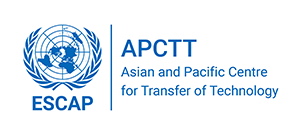Electro-chemical Engine
ZERO EMISSION ELECTROCHEMICAL ENGINE USING HYDROGEN FUEL CELLS: UK company, a world leader in the field of zero emission electrochemical engines (ECEs) using hydrogen fuel cells is looking for a counterpart company in Asia to set up a manufacturing plant. The technology is most advanced in Europe in terms of performance economic viability and closeness to commercialization. The engine has been developed based on the power technology for the manned space program. The technology is ready for transfer now to the car manufacturers. It ensures earlier, cheaper and stable market entry. Around US$ 50 million have been invested in development of the system that is simple in design and ready for mass production. The process uses a patented dry pressing method to manufacture the main component of the fuel cell, the electrode. The electrodes contain a platinum or silver catalyst in a carbon base. A patented injection molded plastic frame surrounds the electrodes and acts as a method for delivering gases and circulating the electrolyte. The ECE has two operational purposes: firstly, to be the source of electricity to directly drive a vehicle; secondly, to recharge conventional batteries on electric vehicles whilst the vehicle is in operation, overcoming their limited range and reducing the number of batteries required. Further, eliminating stationary charging with its high infrastructure and reduced utility costs. So, the ECE provided both electricity to power the electric drive train as well as recharging batteries to handle peak power demands, cold starting and acceleration. ECE consists of the three main elements: alkaline fuel cells (AFCs); hydrogen storage and oxygen extraction systems; and a buffer/control system. A fuel cell is an electrochemical device similar to a battery. However it generates electricity by a catalytic chemical reaction rather than merely storing it. The electrochemical reaction transforms hydrogen and oxygen from air into electrical power and water vapor, latter being the only emission. AFCs are low temperature (70C) systems, using platinum as the catalyst and potassium hydroxide as the liquid electrolyte. AFCs are the only fuel cells used in manned space missions and have 30 years of service superseding a less reliable system. No other fuel cell system can boast this record. The company developed the only system judged by experts to be close to commercial viability. It is therefore now in a position to manufacture at a competitive cost the same fuel cell type used in space missions and hence brings the use of this technology into a wider and less specialized market. The fuel cell system consists of the fuel cell modules combines in stacks, the peripheral equipment and the interface fuel cells-batteries. The peripherals comprise the process controller and 3 loops: the hydrogen (fuel) loop; the air loop; the electrolyte loop. CONTACT DETAILS: Mr.Ove Chr. Bugge - Chairman; Energy Development, Fred. Olsensgt. 1, 0152 Oslo, Norway. Tel:(47-22) 414 333; Fax: (47-22) 414 334; E-mail: energy.development@online.no
Sector: Automotive Components
Country: India
Area of Application: Automobile industry: The hydrogen powered fuel is set to replace the internal combustion engine. The speed of market penetration depends on the pace of technological development, cost competitiveness, the willingness of consumers to switch to a new method of transportation, and the degree to which governments are willing to encourage use of non-polluting technologies. Although these variables are all difficult to quantify, the company has already established that a large potential demand does exist for ECEs in existing niche markets, whilst the demand for non-polluting vehicles of all types will eventually be enormous. The engine would first be marketed for use in light duty commercial vehicles and then wider applications, as the public becomes familiar and stimulated by the advantages of the technology. The focus would therefore be directed to manufacturing the engines and direct to end user marketing, leaving integration into vehicles to constructors and sub-contractors.
Keywords: zero, emission, hydrogen, engine, fuel, automobile, automotive
Advantages: Alkaline fuel based ECEs and vehicles powered by the ECEs have the following characteristics compared to vehicles driven by conventional combustion technology: Cleaner production: zero harmful emissions, vapor is the only effluent. Minimal noise and vibration: like batteries they provide a quiet form of transport but, unlike batteries, they produce electricity at source rather than undergoing the inefficient process of transportation, transmission and storage. Lower operational costs largely due to lower fuel cost per km. Fuel cost per km of industrially available hydrogen produced from natural gas, off-peak grids or biomass can be around 40% lower than that of gasoline powered engines at current prices. Further, hydrogen can be converted to electric traction at an efficiency of at least 65-70%, more than double that of petrol. This means that even at current production costs a hydrogen-powered vehicle with an ECE will have a lifetime cost of as little as one third that of the average internal combustion engine powered car with gasoline. Outstanding competitive advantage in production costs. It is based on two major technological developments. Firstly, the company purchased rights to a cheaper and more effective catalyst using silver instead of platinum. Trials have shown that this catalyst can give a 400% increase in the power density of the AFCs leading to a 75% reduction in production costs. Secondly, simple plant automation and outsourcing of production of peripheral materials have been calculated to give a further 60% reduction in production costs. Equivalent performance to the internal combustion engine; ECEs are of a weight and geometric flexibility that gives them advantages over combustion engines. Longer life - such units have demonstrated operational lifetimes of 20,000 hours, or the equivalent of 1 million km in a light duty vehicle.
Environmental aspects: Energy efficiency
Development Status: Pilot Plant
Legal Protection: Patent
Technical specifications:
Transfer Terms: Technology Licensing , Equipment Supply
Target Countries: World Wide
Estimated cost (US$):
Upload any relevant document:
Contact Person: APCTT (UNESCAP)
Address: Asian and Pacific Centre for Transfer of Technology (APCTT) C-2, Qutab Institutional Area
City: New Delhi
Country: India
Zip/Pin Code: 110016

